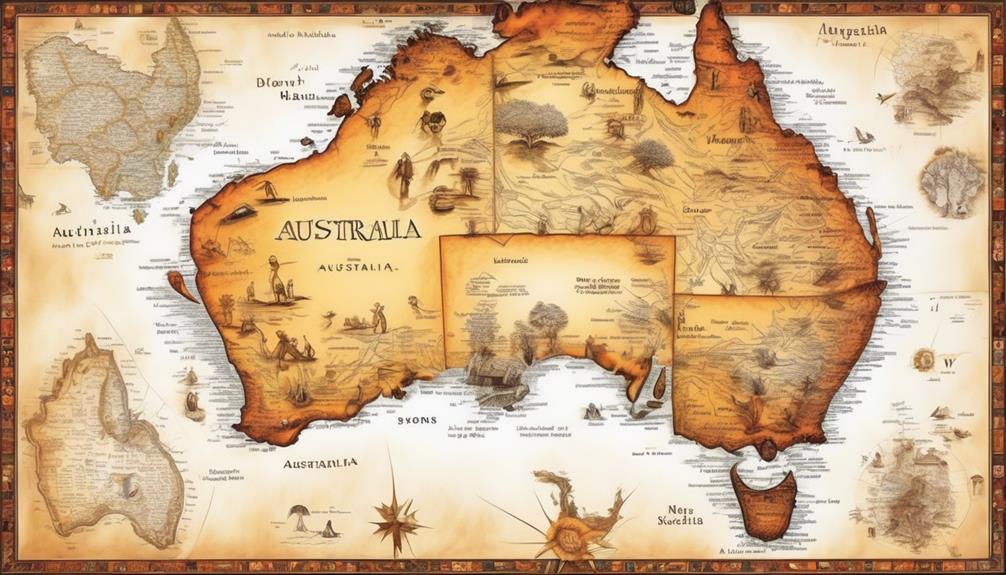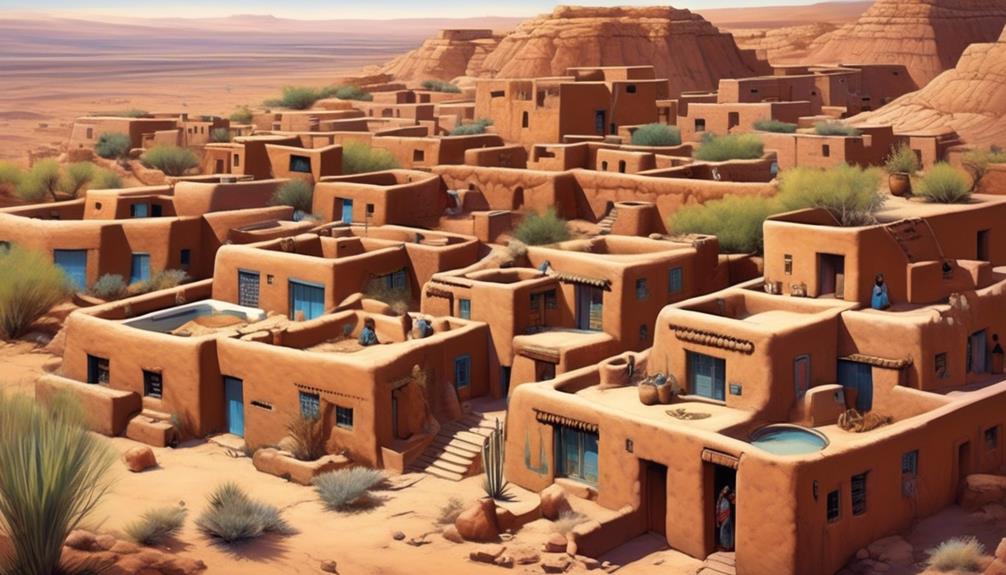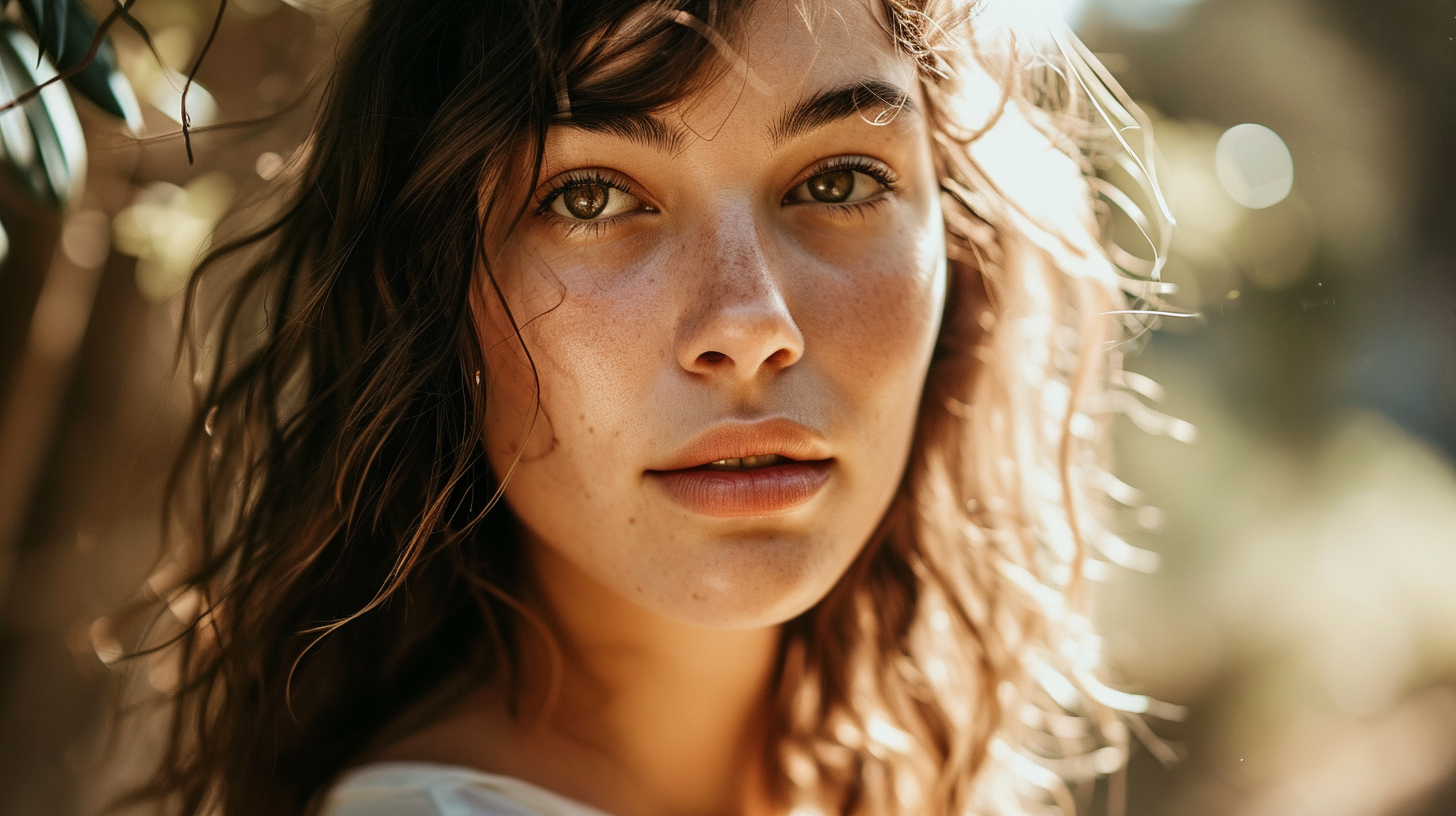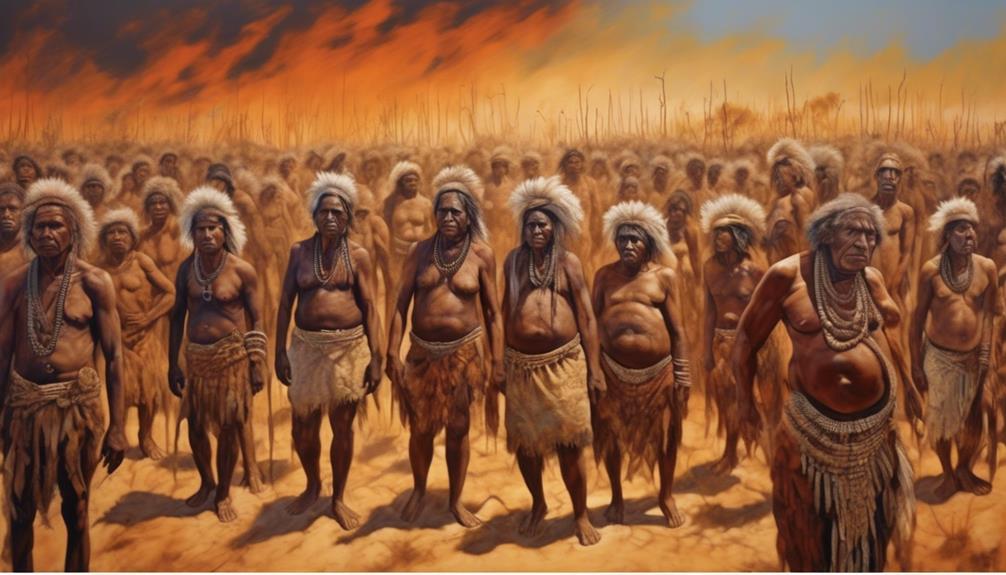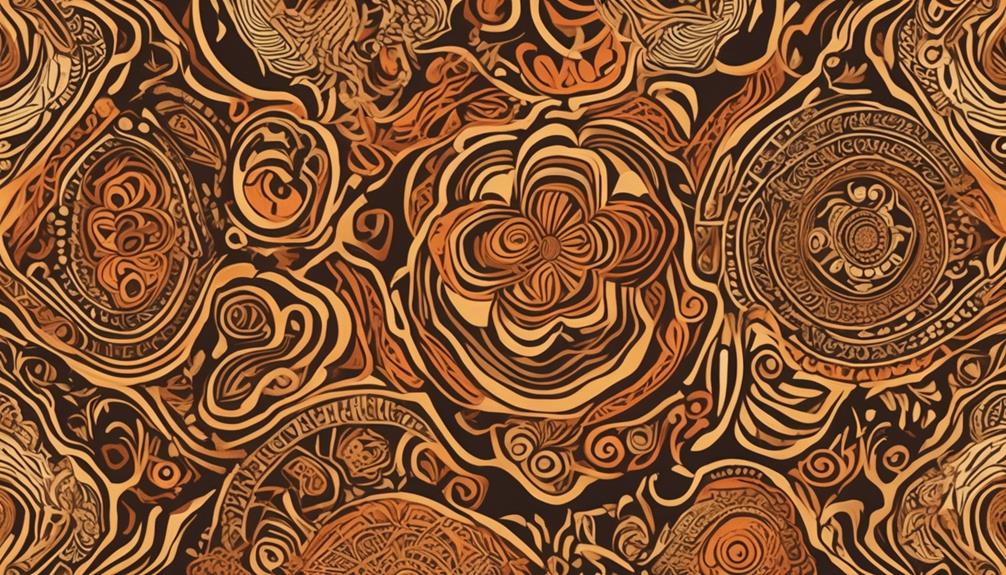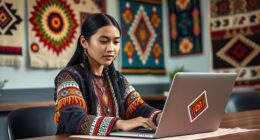Australia’s Indigenous peoples possess a diverse and extensive linguistic heritage that is frequently overlooked, with a common misconception being that they only spoke a single language. In truth, the situation is far more complex and fascinating.
The languages spoken by Aboriginal Australians were as diverse as the land they inhabited, with hundreds of distinct dialects and language groups.
But what did these languages sound like, and how have they fared in the face of European colonization and modernity?
Join me as we unravel the intricate tapestry of Aboriginal Australian languages, exploring their pre-colonial richness, the impact of European settlement, and the ongoing efforts to preserve and revitalize these unique linguistic traditions.
Key Takeaways
- Aboriginal Australians spoke a diverse range of languages and dialects, reflecting the cultural and linguistic diversity of indigenous communities.
- The diversity of Aboriginal dialects is influenced by geographical separation and interactions with neighboring groups, carrying the stories, beliefs, and practices of their respective communities.
- European settlement led to disruptions in traditional Aboriginal ways of life, including language and communication, resulting in a decline in fluency and usage of Aboriginal languages.
- Ongoing efforts in language preservation, through documentation, cultural heritage initiatives, community-led programs, and collaboration with educational institutions, have been made to revitalize and preserve Aboriginal languages.
Pre-colonial Indigenous Languages
Before European colonization, the Aboriginal people of Australia spoke a diverse range of languages and dialects, reflecting the rich cultural and linguistic diversity of the indigenous communities across the continent. Language preservation is of utmost importance in understanding and respecting the history and culture of Aboriginal Australians. The study of indigenous linguistics provides invaluable insights into the unique ways in which these languages are structured and the cultural significance they hold for their respective communities. The preservation of these languages is crucial for maintaining the cultural identity and heritage of Aboriginal Australians.
Indigenous linguistics encompasses a wide range of research focused on documenting, analyzing, and preserving the diverse languages spoken by Aboriginal Australians. This field of study plays a vital role in not only preserving the linguistic diversity but also in fostering a deeper understanding of the cultural traditions and knowledge systems embedded within these languages. Through ongoing efforts in language documentation and revitalization, there's a growing recognition of the importance of supporting indigenous communities in their endeavors to preserve and promote their ancestral languages. These efforts are essential in ensuring that the rich tapestry of Aboriginal Australian languages continues to thrive for generations to come.
Diversity of Aboriginal Dialects
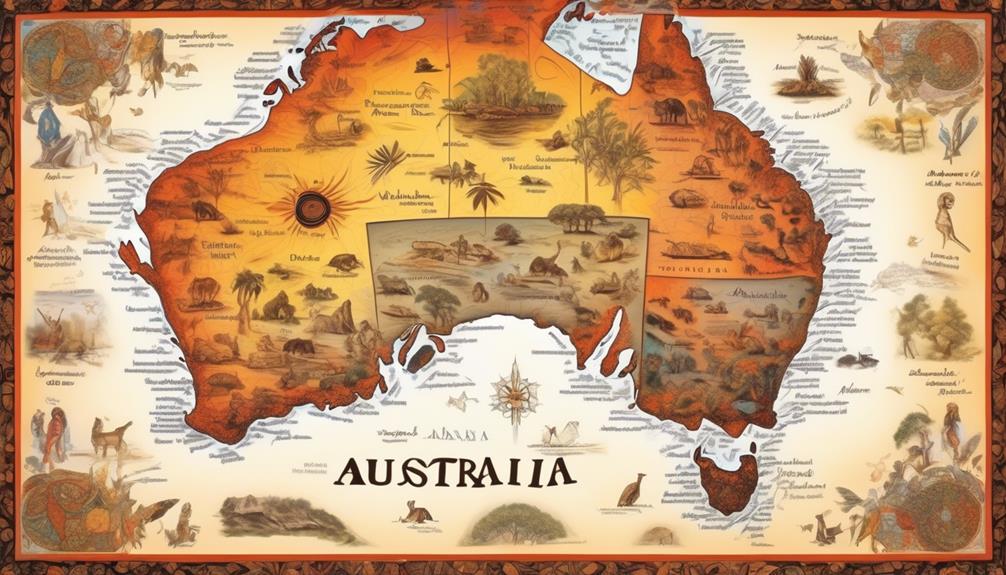
The diversity of Aboriginal dialects reflects the intricate web of linguistic variation and cultural richness present within the indigenous communities of Australia. Regional variations in dialects have developed over thousands of years, influenced by the geographical separation of communities and their interactions with neighboring groups. Linguistic evolution has been shaped by the diverse environments in which Aboriginal peoples have lived, leading to the development of unique vocabularies and grammatical structures in different regions.
The cultural significance of these dialects can't be overstated. They're deeply intertwined with oral traditions, serving as a repository of knowledge about land, history, and spirituality. Each dialect carries the stories, beliefs, and practices of its community, contributing to the preservation and continuation of Aboriginal culture.
Understanding the diversity of Aboriginal dialects is crucial for acknowledging the richness of indigenous languages in Australia. It also highlights the importance of language preservation efforts in maintaining the unique heritage of each community. By recognizing and valuing the linguistic diversity of Aboriginal peoples, we can work towards supporting their cultural identities and ensuring the survival of these invaluable oral traditions.
Impact of European Settlement
The intricate web of linguistic variation and cultural richness present within indigenous Australian communities faced profound changes with the impact of European settlement on Aboriginal dialects. The arrival of European settlers led to significant disruptions in traditional Aboriginal ways of life, including language and communication. Cultural assimilation efforts, such as the establishment of missions and the forcible removal of Aboriginal children from their families, resulted in the loss of language autonomy for many indigenous communities.
The imposition of English as the dominant language further marginalized Aboriginal languages, leading to a decline in fluency and usage. European settlement also brought about the introduction of new diseases, violence, and social upheaval, which had devastating effects on indigenous populations and their languages. As a result, many Aboriginal languages experienced a decline in speakers and some became endangered or extinct.
The impact of European settlement on Aboriginal dialects highlights the enduring legacy of colonization and the ongoing efforts to revitalize and preserve indigenous languages. Understanding this historical context is crucial for acknowledging the resilience of Aboriginal communities and the importance of supporting their linguistic and cultural revitalization efforts.
Efforts in Language Preservation

Efforts in language preservation have been crucial in safeguarding the linguistic heritage of Aboriginal Australian communities amidst the challenges posed by historical and ongoing societal changes. Language documentation and cultural heritage preservation initiatives play a pivotal role in maintaining the rich tapestry of Aboriginal languages, which are integral to the identity, knowledge, and traditions of these communities. Through collaborative efforts between linguists, community members, and governmental organizations, significant strides have been made in documenting, revitalizing, and promoting Aboriginal languages. These endeavors are essential for preserving not only the languages themselves but also the associated cultural practices, stories, and histories that are embedded within them.
To illustrate the magnitude of these preservation efforts, the table below provides a snapshot of some key initiatives and their impact on Aboriginal Australian language preservation:
| Initiative | Impact |
|---|---|
| Community-led language programs | Empowerment of local communities to preserve and transmit languages |
| Linguistic research projects | Documentation of endangered languages for future generations |
| Government funding support | Financial backing for language preservation and revitalization efforts |
| Digital archives and resources | Access to online materials for learning and preserving languages |
| Collaboration with educational institutions | Integration of Aboriginal languages into mainstream education |
These initiatives collectively contribute to the safeguarding of Aboriginal Australian languages and the promotion of cultural heritage preservation.
Contemporary Aboriginal Language Revitalization
Significant progress has been made in contemporary Aboriginal language revitalization efforts through collaborative partnerships and innovative strategies. This revitalization is crucial for the preservation of Aboriginal languages, which are an integral part of their cultural identity.
Collaborative efforts between Aboriginal communities, educational institutions, and government bodies have led to the development of language programs and resources aimed at revitalizing and preserving Aboriginal languages. These programs include community language classes, immersion programs for children, and the creation of language learning materials such as dictionaries, grammar books, and online resources. Additionally, technological advancements have facilitated the creation of language learning apps and interactive online platforms, making the learning process more accessible to a wider audience.
Furthermore, the recognition of Aboriginal languages as official languages in certain regions has provided significant support for their revitalization. This official status has led to the inclusion of Aboriginal languages in educational curriculums and public signage, further promoting their preservation and everyday usage.
While there are still challenges to overcome, such as limited funding and the scarcity of fluent speakers, the collaborative efforts and innovative strategies employed in contemporary Aboriginal language revitalization are making a positive impact on the preservation and promotion of these vital components of Aboriginal cultural identity.
Frequently Asked Questions
How Did Aboriginal Australians Communicate With Each Other Before the Arrival of Europeans?
Before the arrival of Europeans, Aboriginal Australians communicated through various methods. Non-verbal communication, such as body language, gestures, and visual symbols, played a significant role.
Cultural exchange also facilitated communication between different Aboriginal groups. These interactions allowed for the sharing of knowledge, traditions, and practices.
This rich tapestry of communication methods reflected the diversity and complexity of Aboriginal Australian cultures prior to European contact.
What Are Some Unique Characteristics of Different Aboriginal Dialects?
Aboriginal Australian dialects showcase remarkable linguistic diversity, reflecting the rich cultural tapestry of indigenous communities. Each dialect carries unique characteristics, such as distinct phonology and vocabulary, shaping the identity and heritage of its speakers.
For instance, the Kaurna dialect exhibits intricate sound patterns and word structures, exemplifying the intricate linguistic diversity found among Aboriginal communities.
Such diversity offers valuable insights into the complex and dynamic nature of indigenous languages.
How Did the Arrival of Europeans Impact the Use of Traditional Aboriginal Languages?
The impact of colonization on traditional Aboriginal languages was significant. European arrival led to the suppression and decline of these languages. However, there have been ongoing language preservation initiatives to revitalize and maintain these unique dialects.
These efforts aim to ensure the continued use and recognition of Aboriginal languages, honoring their cultural significance. Despite the challenges, these initiatives have made strides in preserving and celebrating the linguistic diversity of Aboriginal Australians.
What Specific Methods Are Being Used to Preserve and Document Aboriginal Languages?
Language preservation is crucial for indigenous education and cultural revitalization.
Various methods, such as community language programs, oral history projects, and language documentation through recordings and written materials, are being used to safeguard linguistic diversity.
These efforts play a significant role in preserving and passing down traditional languages, ensuring that future generations can connect with their heritage and maintain the richness of Aboriginal languages.
What Are Some Current Challenges in Revitalizing and Maintaining Aboriginal Languages in Modern Australia?
In revitalizing and maintaining Aboriginal languages in modern Australia, we face challenges such as language preservation and cultural identity. These issues require comprehensive strategies for documentation and education.
Preserving linguistic diversity is crucial for maintaining cultural heritage. To address these challenges, we must emphasize the importance of Aboriginal languages in education and increase support for community-led language revitalization efforts.
Ultimately, these efforts are essential for preserving the rich cultural tapestry of Aboriginal Australians.
Conclusion
In conclusion, the rich tapestry of Aboriginal languages is like a garden of diverse and vibrant flowers, each one unique and precious.
Despite the impact of European settlement, efforts in language preservation and contemporary revitalization are nurturing and tending to this garden, allowing the beauty and wisdom of these ancient languages to bloom once again.
Let's continue to support and celebrate the resiliency of Aboriginal languages, ensuring their legacy continues to flourish for generations to come.
Mary is a passionate writer who brings creativity and a fresh perspective to our team. Her words have the power to captivate and inspire, making her an essential contributor to our content. Mary’s commitment to storytelling and dedication to promoting Indigenous culture ensures that her work touches the hearts of our readers. We’re fortunate to have her as part of our team.
